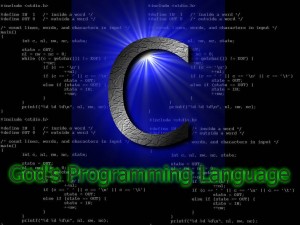 C was developed by Dennis Ritchie at Bell Laboratories in 1972. Most of its principles and ideas were taken from the earlier language B, BCPL and CPL. CPL was developed jointly between the Mathematical Laboratory at the University of Cambridge and the University of London Computer Unit in 1960s. CPL (Combined Programming Language) was developed with the purpose of creating a language that was capable of both machine independent programming and would allow the programmer to control the behavior of individual bits of information. But the CPL was too large for use in many applications. In 1967, BCPL (Basic Combined Programming Language) was created as a scaled down version of CPL while still retaining its basic features. This process was continued by Ken Thompson. He made B Language during working at Bell Labs. B Language was a scaled down version of BCPL. B Language was written for the systems programming. In 1972, a co-worker of Ken Thompson, Dennis Ritchie developed C Language by taking some of the generality found in BCPL to the B language.
The original PDP-11 version of the Unix system was developed in assembly language. In 1973, C language had become powerful enough that most of the Unix kernel was rewritten in C. This was one of the first operating system kernels implemented in a language other than assembly.
During the rest of the 1970's, C spread throughout many colleges and universities because of its close ties to UNIX and the availability of C compilers. Soon, many different organizations began using their own versions of C Language. This was causing great compatibility problems. In 1983, the American National Standards Institute (ANSI) formed a committee to establish a standard definition of C Language. That is known as ANSI Standard C. Today C is the most widely used System Programming Language.
C was developed by Dennis Ritchie at Bell Laboratories in 1972. Most of its principles and ideas were taken from the earlier language B, BCPL and CPL. CPL was developed jointly between the Mathematical Laboratory at the University of Cambridge and the University of London Computer Unit in 1960s. CPL (Combined Programming Language) was developed with the purpose of creating a language that was capable of both machine independent programming and would allow the programmer to control the behavior of individual bits of information. But the CPL was too large for use in many applications. In 1967, BCPL (Basic Combined Programming Language) was created as a scaled down version of CPL while still retaining its basic features. This process was continued by Ken Thompson. He made B Language during working at Bell Labs. B Language was a scaled down version of BCPL. B Language was written for the systems programming. In 1972, a co-worker of Ken Thompson, Dennis Ritchie developed C Language by taking some of the generality found in BCPL to the B language.
The original PDP-11 version of the Unix system was developed in assembly language. In 1973, C language had become powerful enough that most of the Unix kernel was rewritten in C. This was one of the first operating system kernels implemented in a language other than assembly.
During the rest of the 1970's, C spread throughout many colleges and universities because of its close ties to UNIX and the availability of C compilers. Soon, many different organizations began using their own versions of C Language. This was causing great compatibility problems. In 1983, the American National Standards Institute (ANSI) formed a committee to establish a standard definition of C Language. That is known as ANSI Standard C. Today C is the most widely used System Programming Language.

















